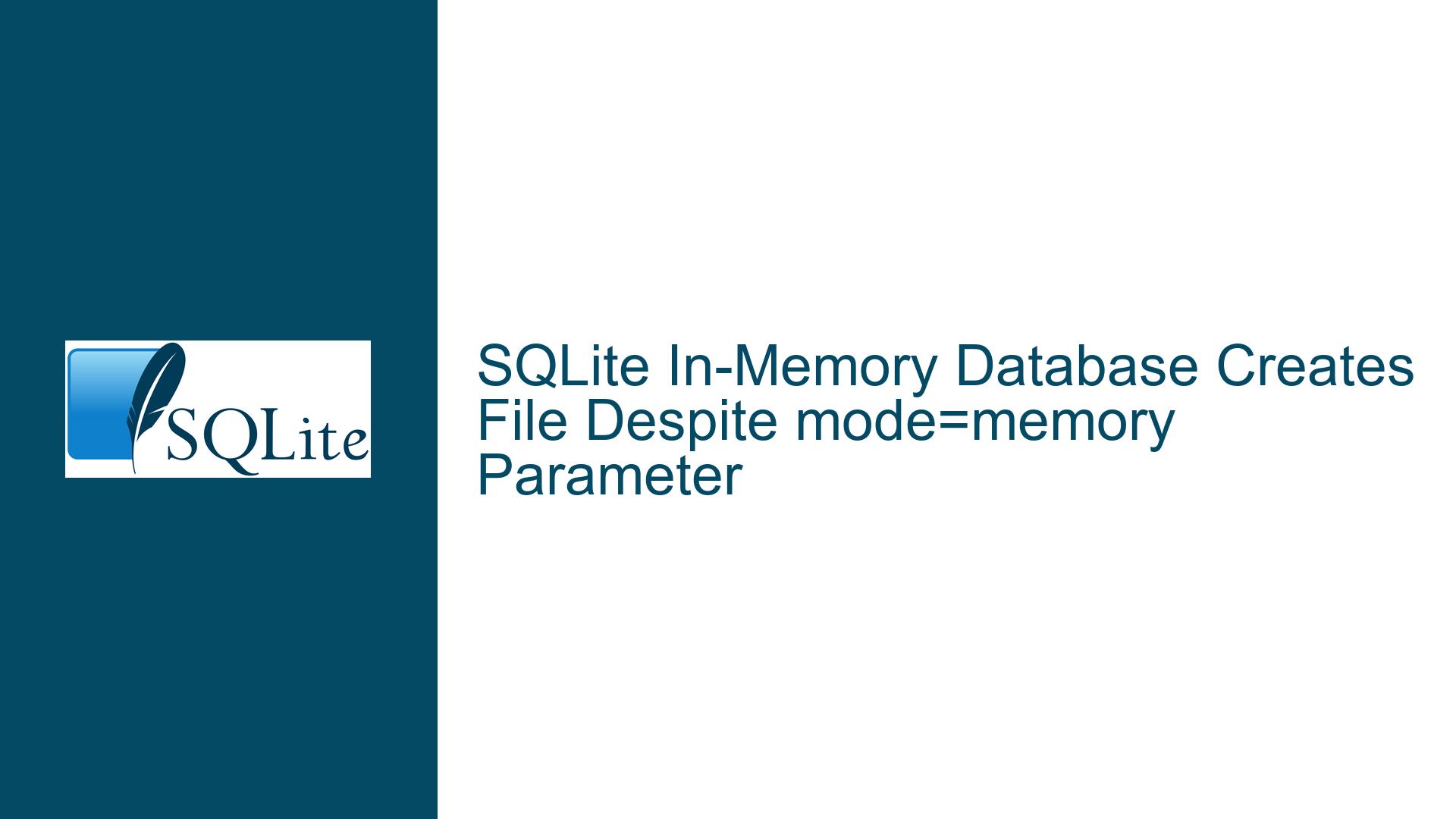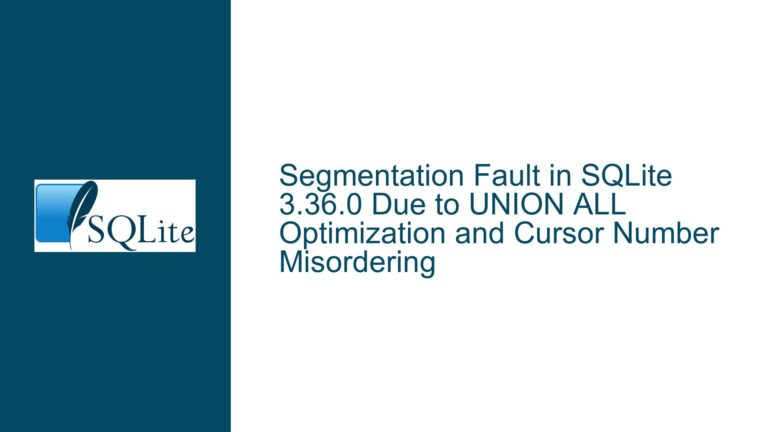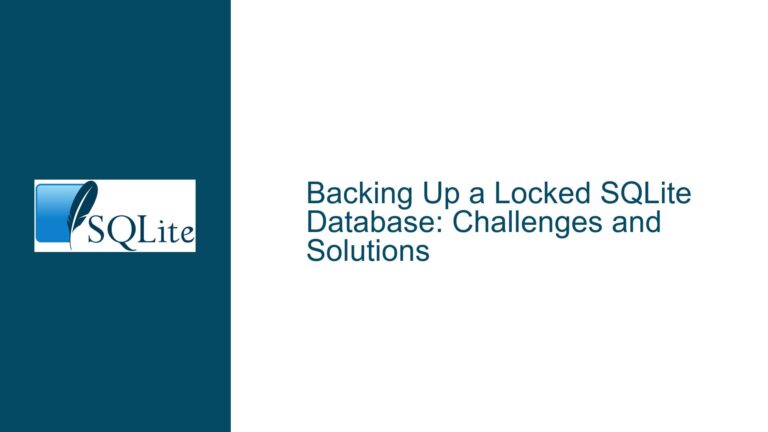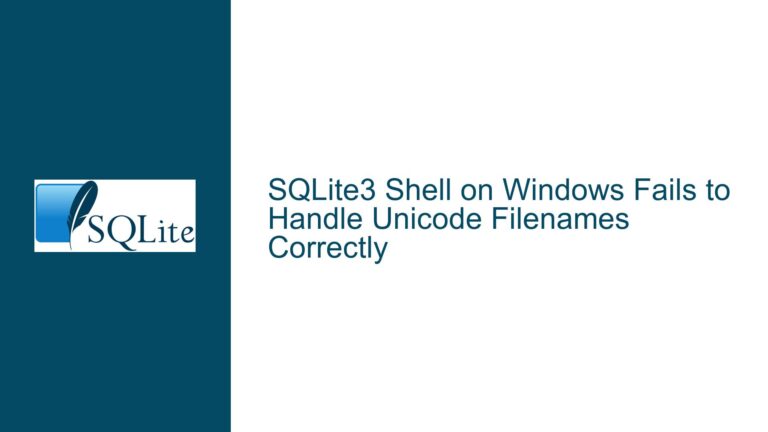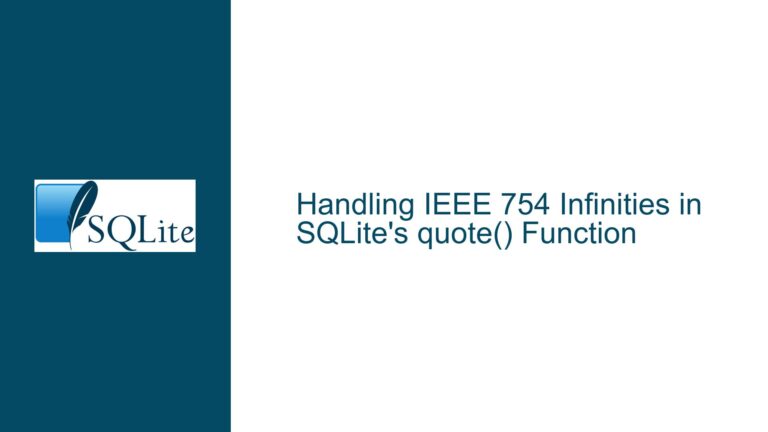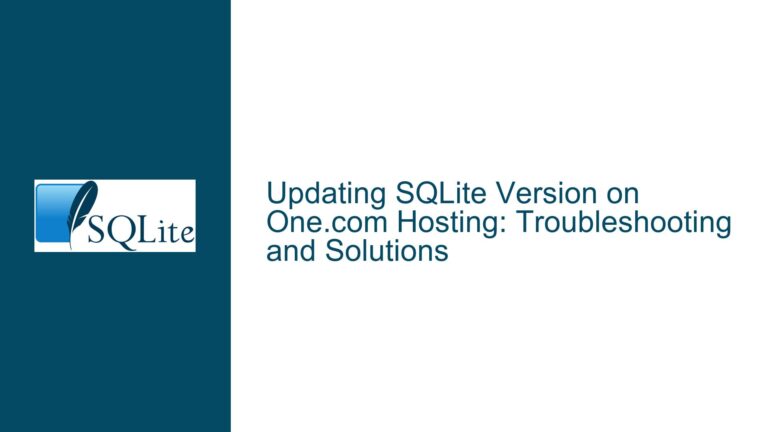SQLite In-Memory Database Creates File Despite mode=memory Parameter
Issue Overview: Inconsistent Behavior Between URI Parameters and File Creation
When configuring an SQLite database connection using a URI with the mode=memory parameter, the expectation is that the database will reside entirely in memory without creating a physical file. This is critical for scenarios like unit testing, where isolating databases and avoiding disk I/O are priorities. However, developers may encounter a contradiction: a file matching the database name in the URI appears on the filesystem despite explicitly specifying mode=memory.
The problem arises from nuances in how URI parameters are interpreted by SQLite and intermediary layers like SQLAlchemy. SQLite’s documentation defines mode=memory as a directive to create an in-memory database when using the file: URI scheme. However, another section of the documentation states that the special :memory: identifier requires no additional text in the filename to function as a pure in-memory database. These two specifications create ambiguity when developers attempt to use "named" in-memory databases (e.g., file:testdb?mode=memory) for distinct instances.
The core conflict lies in the interaction between:
- SQLite’s parsing rules for URIs and parameters.
- Middleware layers (e.g., SQLAlchemy) that may modify or strip parameters before they reach SQLite.
- Misinterpretation of the
file:URI structure when combiningmode=memorywith a filename.
Developers aiming to create multiple in-memory databases often use unique names to differentiate connections (e.g., file:db1?mode=memory and file:db2?mode=memory). When this approach inadvertently creates files, it indicates that the mode=memory parameter is either not being applied or is being overridden by other configuration details.
Possible Causes: Parameter Handling, Middleware Interference, and URI Syntax
1. URI Parameter Stripping by Middleware
SQLAlchemy or its underlying database driver (e.g., pysqlite) might process the connection URI before passing it to SQLite. For example, some frameworks split URIs into components (scheme, host, path, query) and reconstruct them, potentially omitting query parameters like mode=memory. If the mode=memory parameter is discarded, SQLite interprets the URI as a file-based connection, creating the specified file.
2. Misuse of the file: URI Scheme
SQLite’s file: URI syntax requires precise formatting. The mode=memory parameter must follow the filename component without conflicting with other directives. For example, file:should-not-exist?mode=memory&cache=shared is valid only if the entire URI is parsed correctly. If the filename contains invalid characters or the parameters are ordered incorrectly, SQLite may default to file-based storage.
3. Ambiguity Between :memory: and mode=memory
The :memory: identifier and mode=memory parameter serve similar purposes but operate under different rules. The :memory: keyword creates an unnamed, transient database that cannot be shared across connections. In contrast, mode=memory allows named in-memory databases when combined with cache=shared, enabling multiple connections to access the same database. However, if the URI includes a filename and mode=memory, SQLite may prioritize the filename, leading to file creation unless the parameters are strictly enforced.
4. Incorrect Parameter Order or Encoding
URI parameters are order-sensitive in some parsers. If mode=memory appears after conflicting parameters (e.g., mode=rw), it may be ignored. Additionally, improper URL encoding (e.g., spaces or special characters in the filename) can break the URI’s structure, causing SQLite to misinterpret the intended configuration.
5. Driver-Specific Limitations
The pysqlite driver (used by SQLAlchemy for SQLite connections) has historically handled URI parameters inconsistently. Older versions might not support the uri=true flag, which is required for SQLite to parse the entire URI string. Without uri=true, the driver may treat the filename as a literal path, ignoring parameters like mode=memory.
Troubleshooting Steps, Solutions & Fixes: Ensuring Pure In-Memory Behavior
Step 1: Validate URI Syntax and Parameter Order
Ensure the connection URI adheres to SQLite’s requirements:
- Use the
file:scheme with an empty host and a virtual filename. - Include
mode=memoryandcache=sharedas query parameters. - Prepend
uri=trueto enforce URI parsing (critical for some drivers).
Example of a Correct URI:
engine = create_engine('sqlite+pysqlite:///file:testdb?mode=memory&cache=shared&uri=true')
The uri=true parameter instructs the driver to pass the entire URI to SQLite’s internal parser. Without it, pysqlite may treat file:testdb as a filesystem path.
Step 2: Bypass Middleware Parsing Issues
If SQLAlchemy or pysqlite strips parameters, use create_engine’s connect_args to pass the URI directly:
engine = create_engine(
'sqlite+pysqlite://',
connect_args={'uri': 'file:testdb?mode=memory&cache=shared'}
)
This approach avoids URI manipulation by SQLAlchemy and ensures all parameters reach SQLite.
Step 3: Use Distinct Database Names with Shared Cache
To create multiple in-memory databases, assign unique names and enable shared caching:
# Database 1
engine1 = create_engine(
'sqlite+pysqlite:///file:db1?mode=memory&cache=shared&uri=true'
)
# Database 2
engine2 = create_engine(
'sqlite+pysqlite:///file:db2?mode=memory&cache=shared&uri=true'
)
The cache=shared parameter allows connections to the same database name to share memory, while unique names ensure isolation.
Step 4: Verify Driver and SQLite Versions
Outdated drivers may lack support for URI parameters. Upgrade pysqlite and SQLite:
pip install --upgrade pysqlite3 sqlite3
In Python, force the use of the latest driver:
import sqlite3
print(sqlite3.sqlite_version) # Should be ≥3.7.15 for full URI support
Step 5: Avoid Filenames in In-Memory URIs
For unnamed, transient databases, use the :memory: keyword instead of mode=memory:
engine = create_engine('sqlite+pysqlite:///:memory:')
To create multiple distinct databases, append a unique identifier:
engine1 = create_engine('sqlite+pysqlite:///:memory:?cache=shared')
engine2 = create_engine('sqlite+pysqlite:///:memory:?cache=shared')
Note that :memory: databases are isolated by default unless cache=shared is added.
Step 6: Debug URI Parsing with Raw SQLite Connections
Isolate the issue by connecting directly via SQLite’s CLI or a raw connection:
import sqlite3
# Using URI syntax
conn = sqlite3.connect('file:testdb?mode=memory&cache=shared&uri=true', uri=True)
cursor = conn.cursor()
cursor.execute("CREATE TABLE t1 (id INTEGER PRIMARY KEY);")
If this creates a file, the problem lies in the URI or SQLite version. If not, the issue is with SQLAlchemy or pysqlite.
Step 7: Configure SQLAlchemy to Use pysqlite3
The modern pysqlite3 driver handles URIs more reliably. Install it and update the connection string:
engine = create_engine('sqlite+pysqlite3:///file:testdb?mode=memory&uri=true')
Step 8: Review File Creation Triggers
SQLite creates a file if any of the following occur:
- The URI is parsed as a filesystem path.
- Write-ahead logging (WAL) or other journaling modes are enabled.
- Temporary tables or indices are created with
TEMPORARYkeywords.
Disable WAL and temporary storage in memory:
engine = create_engine(
'sqlite+pysqlite:///file:testdb?mode=memory&uri=true',
connect_args={'journal_mode': 'MEMORY'}
)
Final Solution:
For two distinct in-memory databases in SQLAlchemy, use:
from sqlalchemy import create_engine
# Database 1
engine1 = create_engine(
'sqlite+pysqlite3:///file:db1?mode=memory&cache=shared&uri=true'
)
# Database 2
engine2 = create_engine(
'sqlite+pysqlite3:///file:db2?mode=memory&cache=shared&uri=true'
)
This configuration ensures that both databases reside in memory without file creation, leveraging unique names and shared caching for isolation.
By addressing URI syntax, middleware behavior, and driver limitations, developers can reliably configure SQLite in-memory databases for testing and other diskless workflows.
